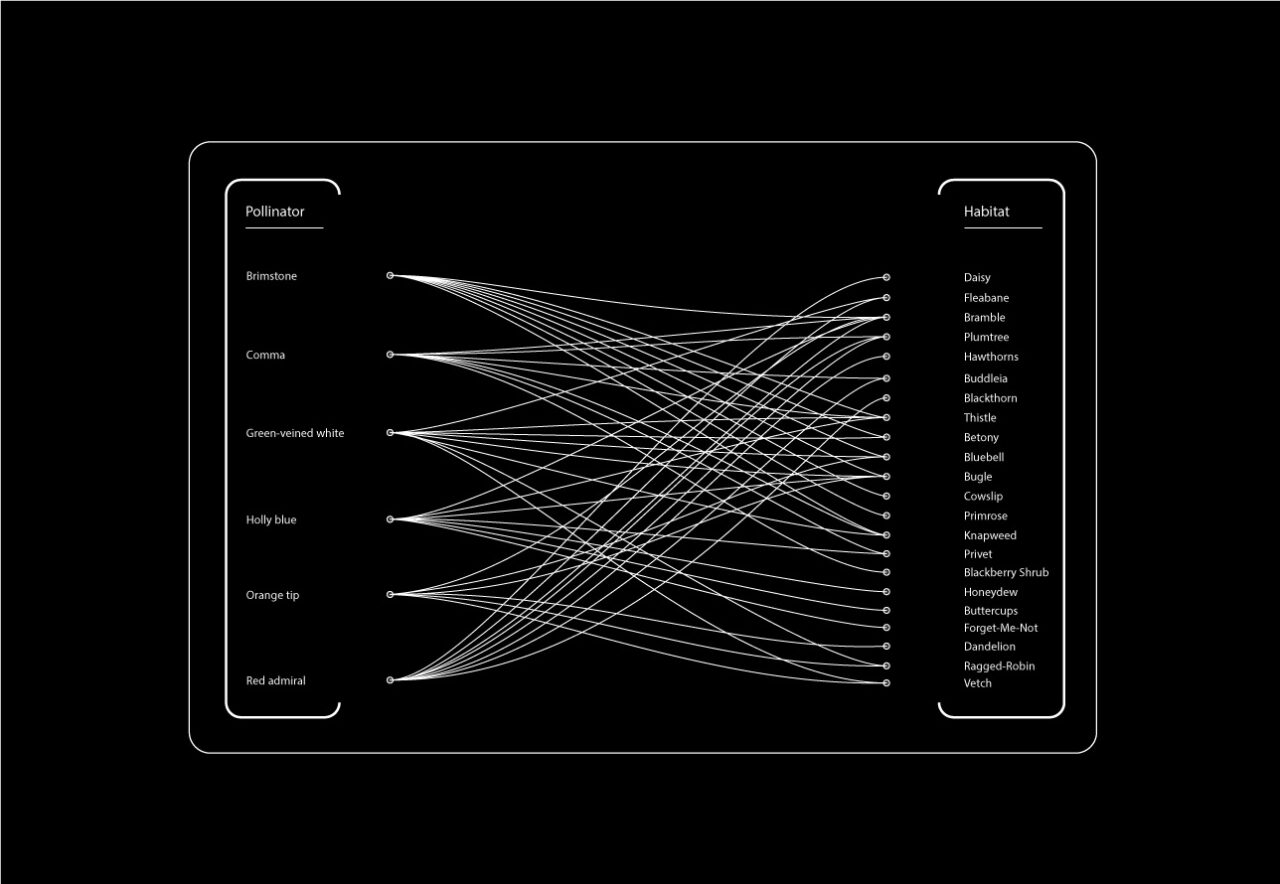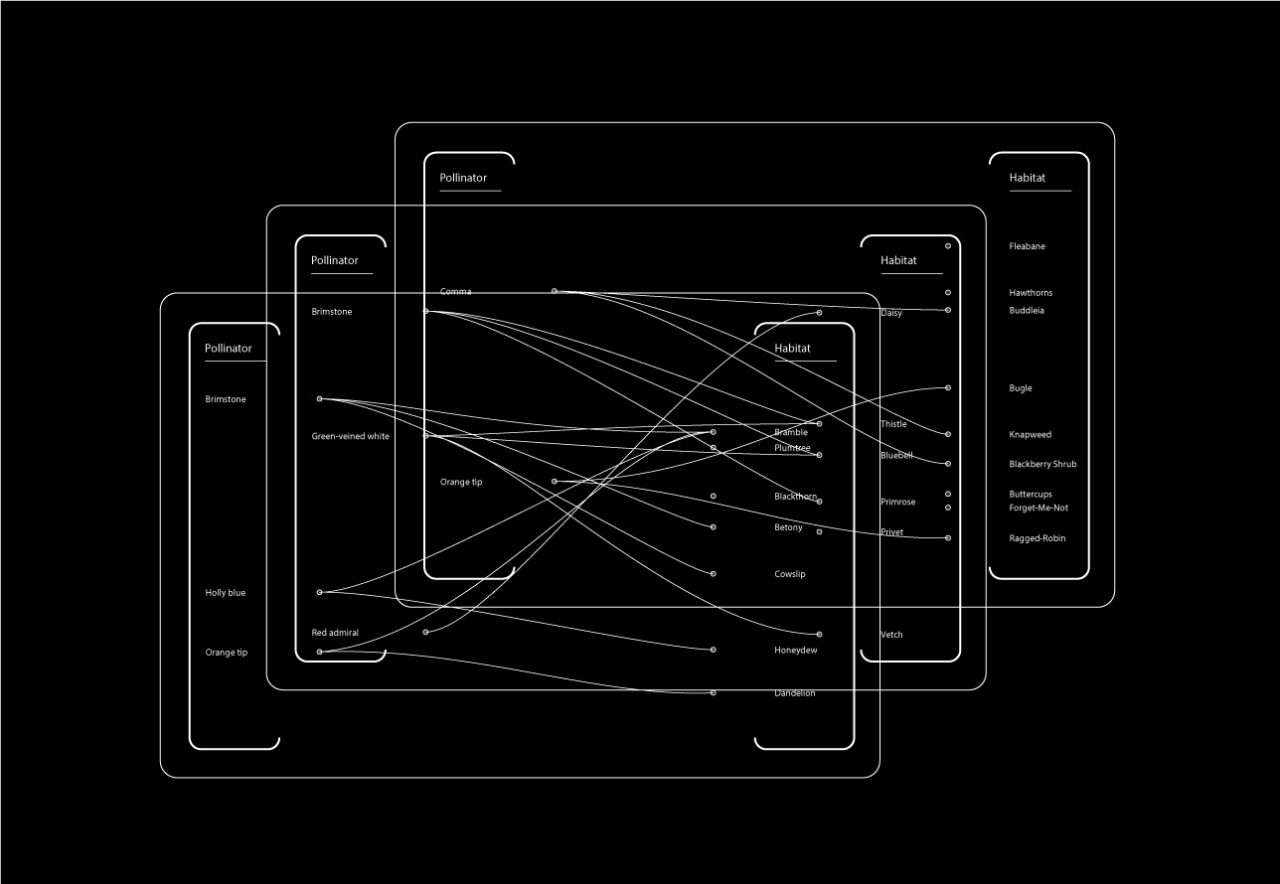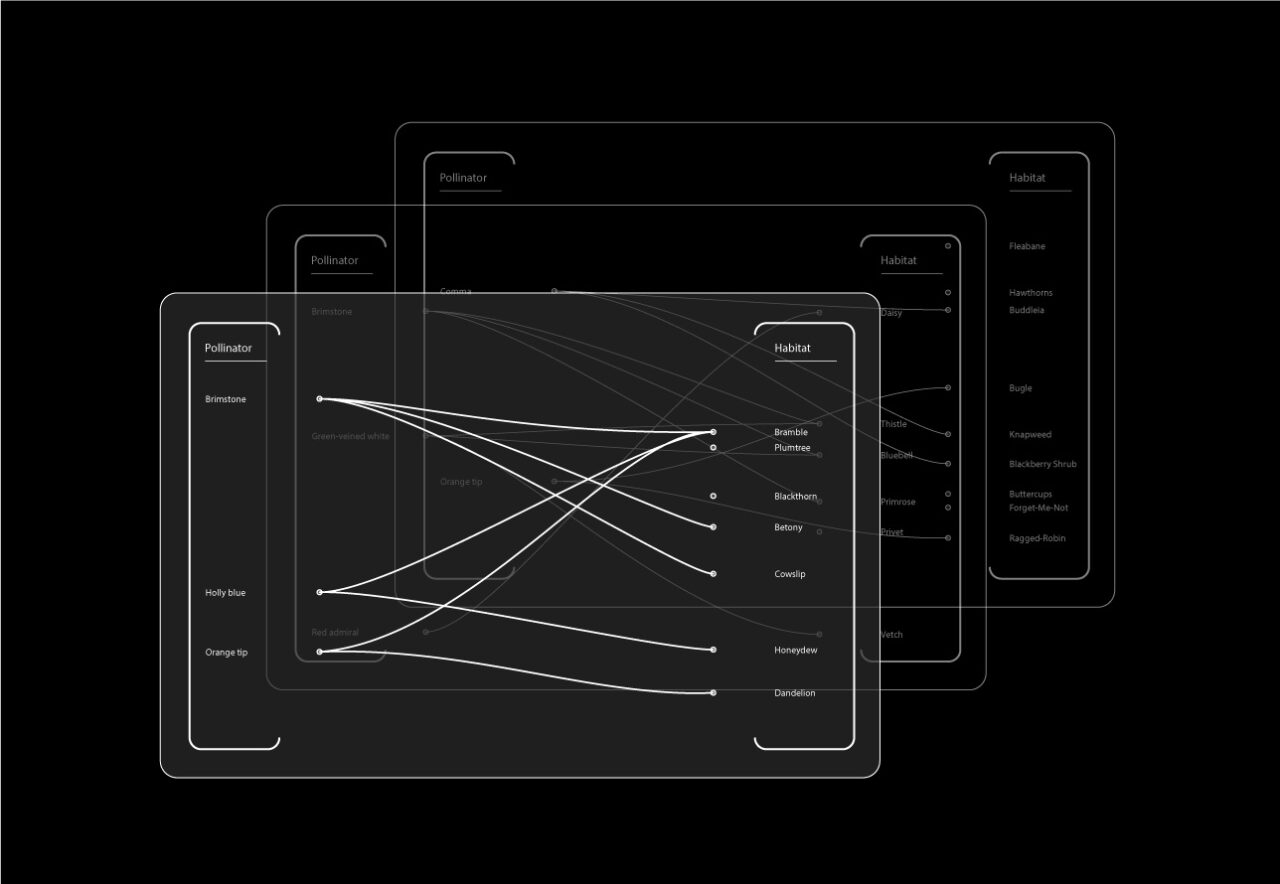ecosystem_mapping
Ecosystems depend on the intricate and often delicate balance of behaviors of a variety of species. However, in the sciences, species are often studied in isolation or in relation to another species, resulting in data, visualizations and insights that do not take into account the complexity of phenomena across the ecosystem.
With the University of Edinburgh, we have developed a self-updating map that illustrates the web of relationships between different trees, herbivores and pollinators in the UK, based on the current research literature. The visualization shows how changes in the population of one particular organism can affect others as well as the ecosystem in general. By modeling the interaction between species, the map enables a better understanding of the impact of changes and interventions, in terms of climate change or direct restoration programs.
The interactions between different trees, herbivores and pollinators are shown in a planar view. At different time scales, it becomes clear how changes in the seasonally dependent behavior of individual organisms can affect symbioses and break them up.
In addition to illustrating the dependencies, this mapping also supports scientific research. The method of confluent mapping shows the extent to which further research is needed and new fields of research must be opened up.
publications
Gebker, M., Wieland, S. (2023). Designing for temporal ecologies [Conference talk]. Designing Temporal Ecologies Conference, Edinburgh, Scotland.
Gebker, M., Wieland, S. (2022). Mapping interactions in an ecosys- tem [Conference talk]. Digital Ecologies Conference, Bonn, Germany.
Gebker, M., Wieland, S., Pschetz, L. (2022). Designing temporal ecologies [Conference talk]. Anthropocene Times Conference. Lancaster University, England.
Project website: http://www.temporaldesign.eca.ed.ac.uk/2022/03/31/mapping/






